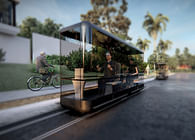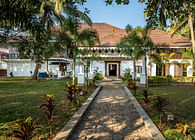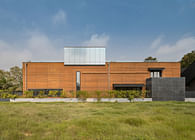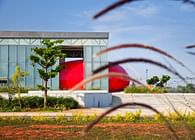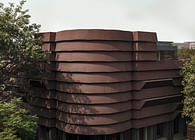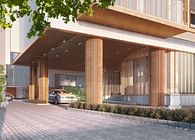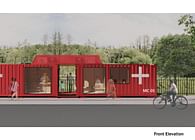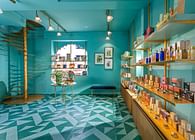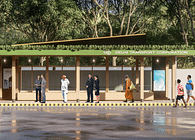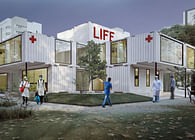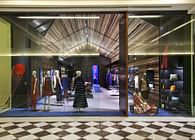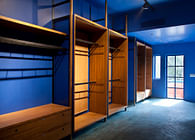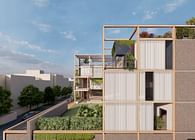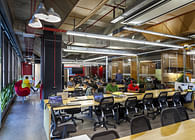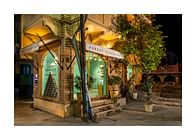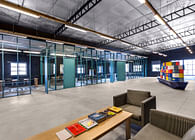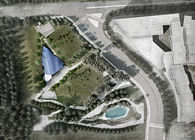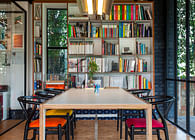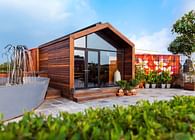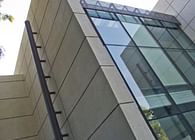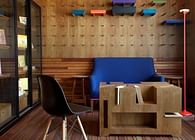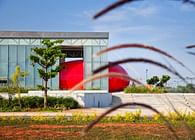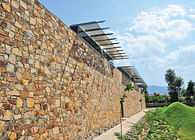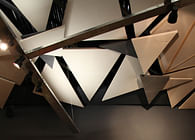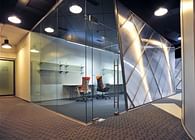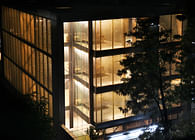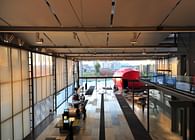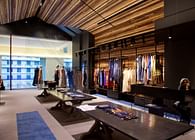
New Delhi, IN
Staff Housing for MMTC
A residential development prioritizing community spaces and living amidst nature.
The MMTC Development is a housing project for employees of the MMTC-PAMP facility, an established leader in the precious metal industry. The 10-acre site is located in the Rojka Meo district of Haryana.
The objective of the project was to create a housing development based on the ideas of eliminating the barrier between buildings and nature, enhancing community living with a sense of cultural belonging, using modular construction techniques with local materials for efficiency and increased quality, and creating a self-sufficient environment with minimal dependency on external sources of energy.
The master plan was designed with the intention of developing the site in phases, by using fragmented built masses that would be incrementally built in three stages. The built footprint is kept to a minimum, allowing the apartments to be punctured by green and open spaces that lend themselves to community activities. The housing occupies long linear strips amidst landscaped open areas, maximizing views and access to light and ventilation. Vehicular roads are relegated to the periphery keeping internal roads entirely pedestrian with landscaped pockets and integrated seating. Pedestrian connectivity in the large site is enhanced with green shaded walkways. The master plan is representative of the emphasis on open spaces for community engagement, including large areas assigned to outdoor sports, pockets for spring gardens, water bodies and public art, play areas and open-air theatres.
Each unit is limited to four floors, ensuring ease of navigability by foot, reduced cost and construction time, and increased serviceability without the advanced fire fighting requirements. The form of the units is designed to create an engaging interface between the homes and the street. Alternating units are raised above ground, creating a porous and walkable ground level. The apartment blocks are sectionally staggered, resulting in open spaces like balconies and terraces overlooking the streetscape.
The morphology of the individual units is dictated by the hybrid construction system adopted. The design proposes the use of modular, prefabricated elements along with locally sourced material with in situ construction, allowing for faster construction with higher quality control while being cost-effective and sustainable. A detailed study of the sun path, light, and shading was carried out to design bay windows, projections, and balconies, made of prefabricated elements that would be assembled on site.
The design of the individual homes themselves are centered around a study of ergonomics and space efficiency. Clean, efficient, and well-functioning units are designed for hostels, single occupancy rooms, and families. Light and air are prioritized, with balconies and bay windows introduced into all units.
The MMTC development aims at using passive technologies for self-sufficiency, limiting the use of power from the city grid. These techniques include the use of installations made of terracotta tubes and water that naturally cool the air flowing through it. Compost farming areas are integrated into the design, making positive use of biodegradable waste. Within the units, trickle ventilation and shading devices keep mechanical cooling requirements in check.
Status: Unbuilt
Location: Haryana, IN
Firm Role: Architect
